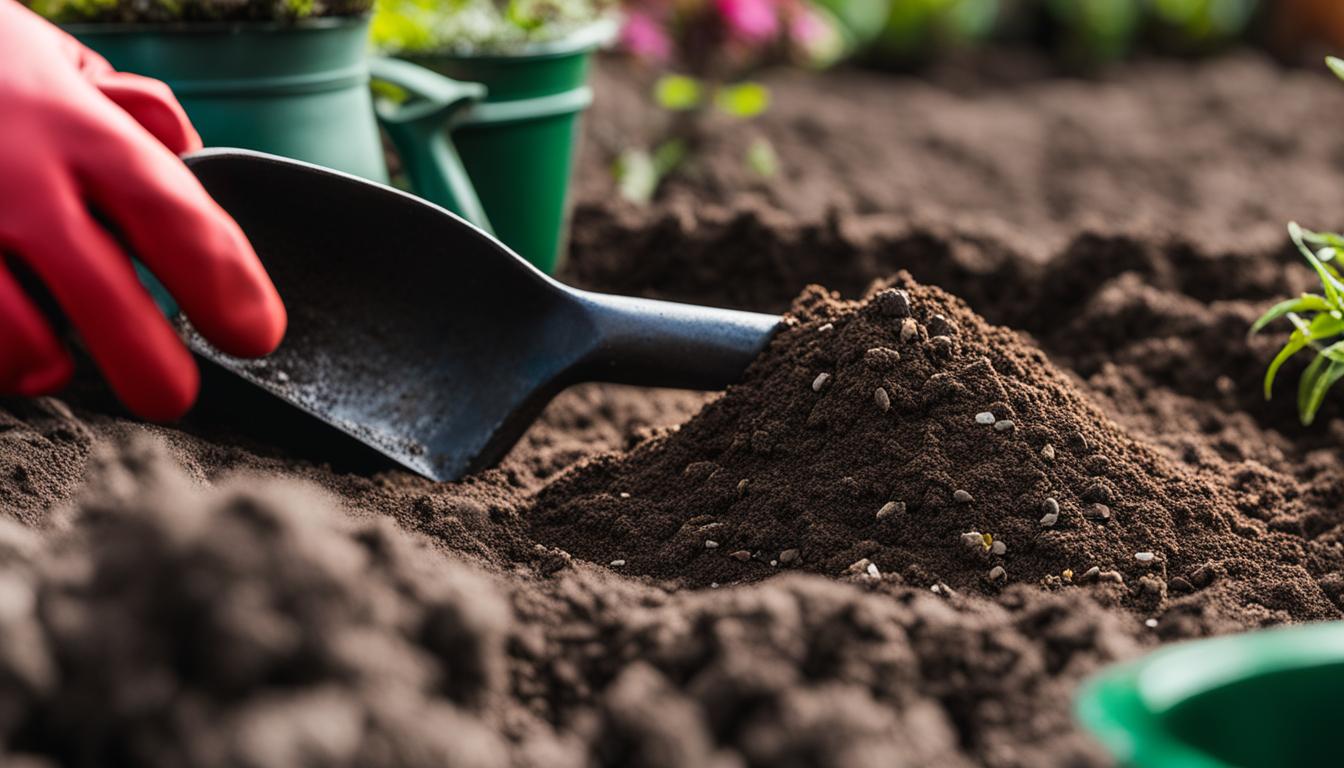
Having well-draining soil is crucial for promoting healthy plant growth. It ensures that plant roots receive the right balance of air and water, preventing issues like waterlogged roots or drying out. By following some simple techniques, you can create a well-draining soil mix that will support the flourishing of your plants.
In this article, I will guide you through the process of improving soil drainage and creating a well-drained soil mix. We’ll explore different techniques, from incorporating organic matter to using raised beds and creating soil mix for container gardening. By the end, you’ll have the knowledge and tools to optimize your soil’s drainage for healthier, thriving plants.
Key Takeaways:
- Well-draining soil is essential for healthy plant growth.
- Soil drainage can be improved using various techniques.
- Adding organic matter helps break up dense soils and improve drainage.
- Raised beds are an effective solution for better soil drainage.
- Using a well-draining soil mix is important for container gardening.
Understanding Soil Drainage and Its Importance
When it comes to creating a well-draining soil mix, it’s important to understand the concept of soil drainage and its significance for healthy plant growth. Soil drainage refers to the movement of water through the soil, and it plays a crucial role in preventing issues like waterlogging and root rot.
Different types of soil have varying drainage capabilities, with sandy soil draining quickly and clay soil draining slowly.
Determining the drainage of your soil can be done through a simple test. Dig a hole in your garden and observe how quickly the water level drops. If the water drains slowly or stays pooled, it indicates poor drainage.
On the other hand, if the water drains rapidly, it suggests good drainage. Understanding the drainage characteristics of your soil is essential for creating a suitable environment for your plants.
Improving soil drainage can be achieved through various techniques. For soils with poor drainage, adding organic matter can help. Organic matter, such as compost or shredded leaves, can be incorporated into the soil to break up dense particles and improve drainage.
This can be done by spreading a layer of organic matter over unplanted beds and working it into the topsoil. For already planted beds, adding compost annually to the soil surface can enhance drainage over time.
By understanding the importance of soil drainage and implementing techniques to improve it, you can create a well-draining soil mix that supports healthy plant growth. This will provide the ideal balance of air and water for your plants’ roots, ensuring they thrive in your garden.
Soil Drainage Test
| Soil Type | Drainage |
|---|---|
| Sandy Soil | Drains quickly |
| Loam Soil | Well-draining |
| Clay Soil | Drains slowly |
Improving Soil Drainage with Organic Matter
When it comes to creating a well-drained soil mix, incorporating organic matter is a highly effective method. Organic matter, such as compost or shredded leaves, can help improve the drainage properties of the soil and create an optimal environment for plant growth.
By breaking up dense soils, organic matter allows water to flow more freely, preventing issues like waterlogging and root rot.
For unplanted beds, you can spread 3-4 inches of organic matter over the soil surface and work it into the top 8-12 inches of soil. This ensures that the organic matter is evenly mixed and distributed throughout the soil, promoting improved drainage.
If you have planted beds, it’s recommended to add a couple of inches of compost to the soil surface annually. This ongoing addition of organic matter will further enhance drainage over time.
Benefits of Organic Matter for Soil Drainage
| Benefit | Explanation |
|---|---|
| Breaks up dense soil | Organic matter helps loosen compacted soil, allowing water to permeate more easily. |
| Enhances soil structure | By improving soil structure, organic matter creates pore spaces for water to drain through. |
| Increases water-holding capacity | Organic matter acts as a sponge, absorbing moisture and then slowly releasing it to plant roots. |
| Promotes beneficial microbial activity | The presence of organic matter encourages the growth of beneficial soil microorganisms, which aid in nutrient cycling and soil health. |
Using organic matter in your soil mix is a cost-effective and sustainable way to improve drainage. It not only helps create a well-drained soil mix but also promotes overall soil health.
By maintaining a balance of organic matter in your garden beds, you can provide an optimal growing environment for your plants and ensure their long-term vitality.
Using Raised Beds for Better Drainage
When it comes to creating a well-draining soil mix, using raised beds is a fantastic solution. Raised beds provide several benefits, including improved drainage and a controlled growing environment for plants. They are particularly helpful in areas with heavy clay soil or poor natural drainage.

By elevating the planting area, raised beds allow excess water to drain away more easily. This prevents waterlogging and ensures that plant roots have sufficient oxygen. Raised beds provide better control over soil composition, allowing you to create a customized well-draining soil mix.
When constructing raised beds, you can choose from various materials, including wood, concrete blocks, or even repurposed materials like old tires or wine barrels. The size and height of the bed can also be tailored to your specific needs and preferences.
| Material | Pros | Cons |
|---|---|---|
| Wood | Natural look, easy to customize | May rot over time, requires maintenance |
| Concrete blocks | Durable, long-lasting | Less aesthetic appeal, may be more expensive |
| Repurposed materials | Environmentally friendly, creative options | May require additional preparation |
When filling raised beds with soil, it’s important to use a well-draining soil mix. This typically consists of a combination of high-quality topsoil and organic matter, such as compost or well-rotted manure.
The organic matter helps improve soil structure and drainage, while the topsoil provides essential nutrients for plant growth.
By utilizing raised beds and creating a well-draining soil mix, you can ensure that your plants thrive in optimal growing conditions. Whether you’re growing vegetables, flowers, or herbs, raised beds offer a practical solution for improving soil drainage and promoting healthy plant growth.
Creating Well-Draining Soil for Container Gardening
When it comes to container gardening, creating a well-draining soil mix is crucial for the health and growth of your plants. Using the right soil mix helps prevent waterlogging, which can lead to root rot and other issues.
It’s best to avoid using regular garden soil in containers as it can be too heavy and doesn’t provide adequate drainage. Instead, opt for a well-draining potting mix or make your own blend.
“Using a well-draining soil mix is essential for successful container gardening. It improves drainage, prevents waterlogged roots, and allows plants to thrive.”
A homemade potting soil mix for containers often consists of ingredients like sphagnum peat moss, perlite, vermiculite, and compost.
These materials help create a well-balanced mix that provides good drainage and water-holding capacity. Sphagnum peat moss helps retain moisture, while perlite and vermiculite improve aeration and drainage.
Here’s a simple recipe for a DIY well-draining soil mix for container gardening:
| Ingredient | Quantity |
|---|---|
| Sphagnum peat moss | 2 parts |
| Perlite | 1 part |
| Vermiculite | 1 part |
| Compost | 1 part |
Benefits of a Well-Draining Soil Mix for Container Gardening
A well-draining soil mix offers several benefits for container gardening. Firstly, it helps prevent overwatering and waterlogged roots, which can lead to plant stress and decline. Good drainage allows excess water to flow out of the container, preventing the buildup of stagnant water.
Secondly, a well-draining soil mix promotes healthy root growth by ensuring an optimal balance of air and moisture. Plant roots need oxygen to thrive, and a good drainage system helps supply that oxygen.
Lastly, a well-draining soil mix allows for better nutrient absorption by plant roots. When water drains freely, nutrients from fertilizers or organic matter can move through the soil and reach the roots more effectively.
In conclusion, creating a well-draining soil mix is essential for successful container gardening. It helps prevent waterlogging, promotes healthy root growth, and improves nutrient uptake.
Whether you choose to make your own potting mix or purchase a pre-made one, ensuring good drainage will set your container plants up for success.
Understanding Potting Soil Ingredients and their Role

I have discovered that creating a well-draining soil mix for container gardening requires a good understanding of the ingredients involved and their role in supporting plant growth.
Potting soil is a soilless blend that provides the ideal growing medium for potted plants. It consists of various ingredients, each serving a specific purpose in improving drainage and nutrient availability.
One of the key ingredients commonly found in potting soil is sphagnum peat moss, which helps retain moisture while providing good aeration to plant roots.
Coir fiber is an alternative to peat moss, offering similar benefits. Both of these organic materials contribute to the overall water-holding capacity of the soil mix.
“Perlite is another crucial ingredient that enhances drainage in potting soil. It is a lightweight volcanic mineral that creates air pockets in the soil, preventing it from becoming compacted and ensuring adequate oxygen reaches the roots.”
Vermiculite is often added to potting soil for its water-retention properties, reducing the frequency of watering. It can hold moisture while still allowing excess water to drain away. Sand is sometimes used to improve drainage in heavy or dense potting mixes, providing better aeration for the roots.
The Role of Nutrients in Potting Soil
In addition to the physical properties, potting soil also contains fertilizers or amendments to provide essential nutrients for plant growth. These can include organic or synthetic fertilizers, slow-release nutrients, or other additives specific to the nutritional needs of different plants.
The combination of these ingredients and their proportions in potting soil determines the overall quality and suitability for specific plant types. By understanding the role of each ingredient, you can create a DIY well-draining soil mix that meets the needs of your container plants.
| Potting Soil Ingredient | Role |
|---|---|
| Sphagnum Peat Moss or Coir Fiber | Retains moisture and improves aeration |
| Perlite | Enhances drainage and prevents compaction |
| Vermiculite | Retains water while allowing excess drainage |
| Sand | Improves drainage in heavy soil mixes |
| Nutrients and Fertilizers | Provides essential nutrients for plant growth |
Creating your own well-draining soil mix allows you to tailor the composition to the specific needs of your plants. Experiment with different ingredient ratios to find the best combination that promotes healthy growth in your container garden.
Homemade Potting Soil Recipes for Different Plant Needs
Creating your own potting soil allows you to tailor the mix to meet the specific needs of your plants. Whether you’re growing vegetables, flowers, or succulents, there’s a homemade potting soil recipe that’s perfect for you. Here are some DIY well-draining soil mix recipes for different plant types:
1. General Use Potting Soil Mix:
This all-purpose potting soil recipe is suitable for most plants and provides good drainage. Mix the following ingredients in equal parts:
- Peat moss or coir fiber
- Perlite
- Compost
- Lime (if using peat moss)
- DIY container fertilizer blend
2. Potting Soil Mix for Trees and Shrubs:
If you’re planting trees or shrubs in containers, they require a well-draining soil mix that supports their growth. Use the following recipe:
- Peat moss or coir fiber
- Perlite or vermiculite
- Compost
- Granular slow-release fertilizer
3. Potting Soil Mix for Succulents and Cacti:
Succulents and cacti thrive in well-draining soil that replicates their natural habitat. Here’s a recipe to create a suitable soil mix:
- Coarse sand or perlite
- Cactus mix or potting soil with added sand
- Perlite or pumice
4. Potting Soil Mix for Seed Starting:
When starting seeds indoors, it’s important to use a soil mix that provides excellent drainage. Try this recipe:
- Sterile seed starting mix or fine-grade compost
- Perlite or vermiculite
5. Potting Soil Mix for Transplanting Seedlings:
Transplanting seedlings requires a gentle and well-draining soil mix. Here’s a recipe to ensure successful transplantation:
- General-purpose potting soil or seed starting mix
- Perlite or vermiculite
- Compost
| Potting Mix Recipe | Ingredients |
|---|---|
| General Use Potting Soil Mix | Peat moss or coir fiber, Perlite, Compost, Lime (if using peat moss), DIY container fertilizer blend |
| Potting Soil Mix for Trees and Shrubs | Peat moss or coir fiber, Perlite or vermiculite, Compost, Granular slow-release fertilizer |
| Potting Soil Mix for Succulents and Cacti | Coarse sand or perlite, Cactus mix or potting soil with added sand, Perlite or pumice |
| Potting Soil Mix for Seed Starting | Sterile seed starting mix or fine-grade compost, Perlite or vermiculite |
| Potting Soil Mix for Transplanting Seedlings | General-purpose potting soil or seed starting mix, Perlite or vermiculite, Compost |
Experiment with these homemade potting soil recipes to find the perfect mix for your plants. Remember to adjust the ingredients based on your specific plant needs and always monitor the moisture levels to ensure optimal drainage and growth. Happy gardening!
Creating a well-draining soil mix is crucial for maintaining healthy plants. By following the techniques mentioned earlier, you can ensure that your plants receive the right balance of air and water in the soil, preventing issues like waterlogged roots or drying out.
Whether you are improving the drainage of your garden beds, using raised beds, or creating a well-draining soil mix for container gardening, the key is to provide optimal growing conditions for your plants.
Experimenting with different homemade potting soil recipes can help you find the best mix for your specific plant needs. Making your own potting soil allows you to customize the blend according to the requirements of your plants.
Whether you are growing general plants, potted trees and shrubs, succulents and cacti, or starting seeds, there are various recipes available to cater to different plant types.
In summary, by incorporating organic matter into the soil, using raised beds, and making your own well-draining soil mix, you can create an ideal growing environment for your plants.
Remember to consider factors like soil type and the specific needs of your plants when determining the best soil mix for good drainage. With a little experimentation and care, you’ll be able to provide the optimal conditions for your plants to thrive.
After reading this, check out our other articles on:
- Using Coconut Coir in Potting Mixes for Gardening Success
- Succulent Potting Mix for Growth: Unlock Thriving Plants
FAQ
What is the importance of well-draining soil for plants?
Well-draining soil ensures that plant roots receive the right balance of air and water, preventing issues like waterlogged roots or drying out.
How can I determine the drainage of my soil?
Dig a hole and observe how quickly the water level drops. Sandy soil tends to drain quickly, while clay soil drains slowly.
How can I improve soil drainage with organic matter?
Incorporate compost or shredded leaves into the existing soil to break up dense soils and improve drainage.
How can raised beds help improve soil drainage?
Raised beds elevate the planting area, allowing excess water to drain away more easily. A well-draining soil mix is used in raised beds for optimal plant growth.
What type of soil mix should I use for container gardening?
It is recommended to use a well-draining soil mix for containers, such as bagged potting mix or homemade blends containing materials like sphagnum peat moss, perlite, vermiculite, and compost.
What ingredients are commonly found in potting soil?
Potting soil may contain ingredients such as sphagnum peat moss, coir fiber, perlite, vermiculite, sand, limestone, and fertilizers, which improve drainage and nutrient availability for plants.
Are there specific recipes for homemade potting soil?
Yes, there are different recipes available for various plant needs. General potting soil recipes typically include a blend of peat moss or coir fiber, perlite, compost, lime (if using peat moss), and a DIY container fertilizer blend.
How can I create a well-draining soil mix for my plants?
By following the techniques mentioned earlier and using the appropriate ingredients, you can ensure that your plants have the right balance of air and water in the soil.

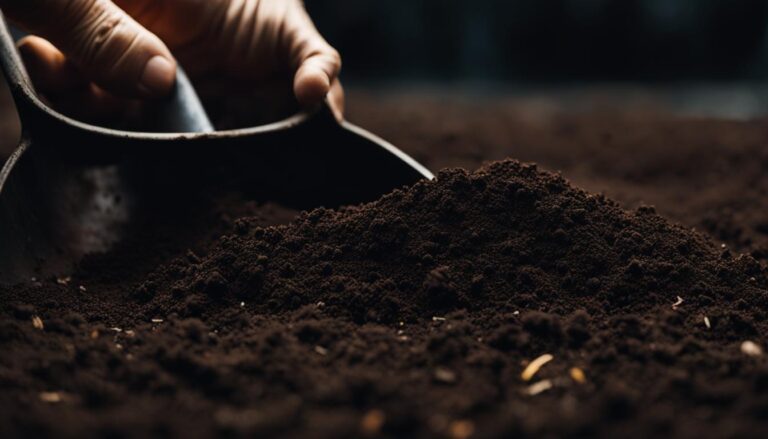
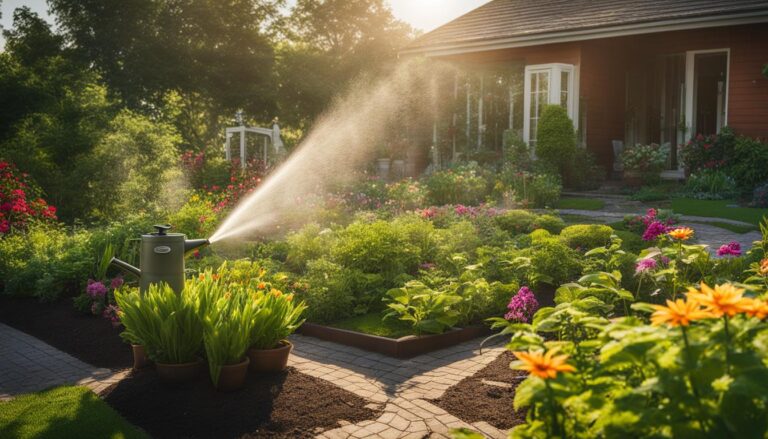
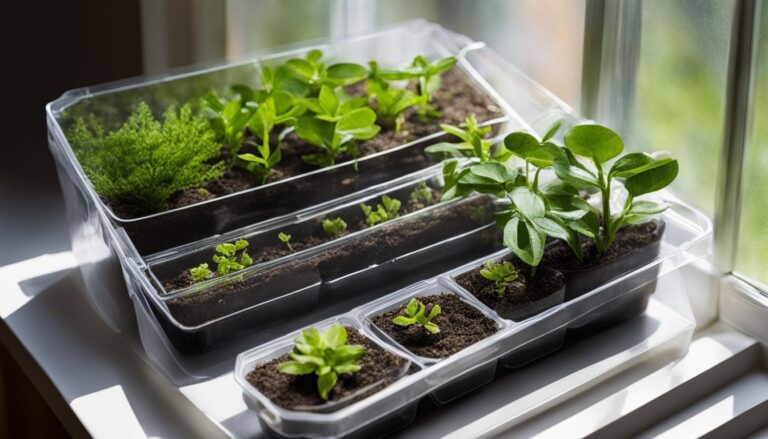
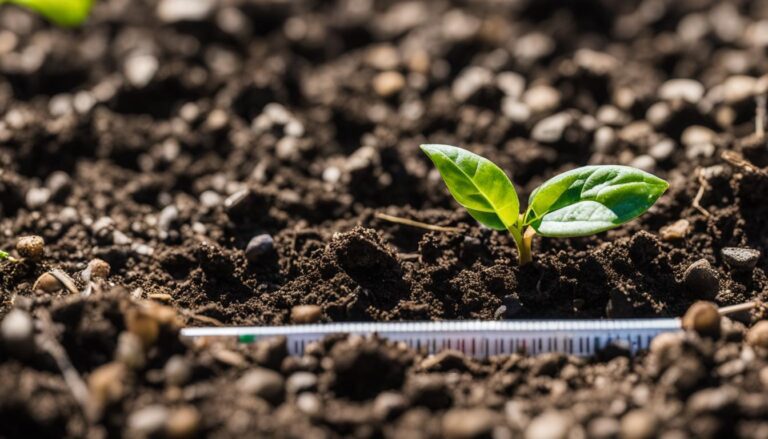
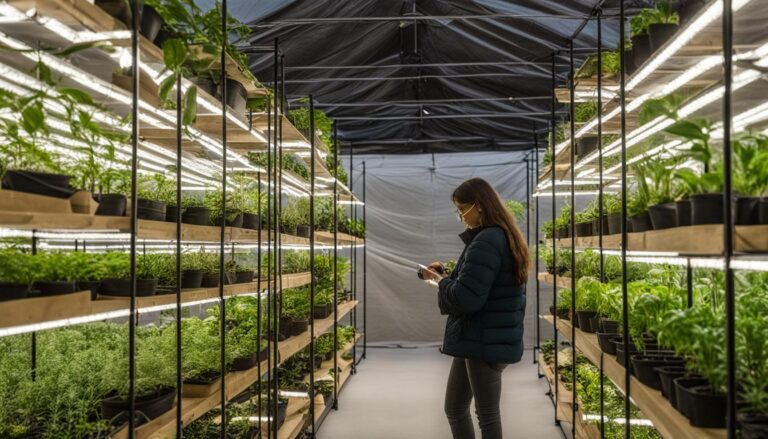
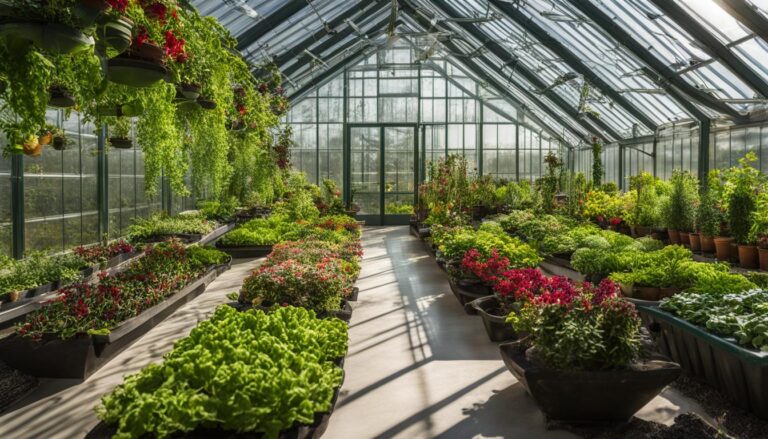
2 Comments
Comments are closed.